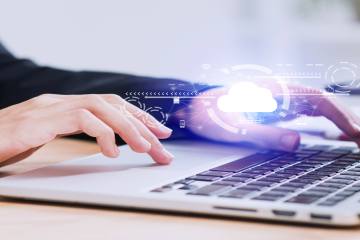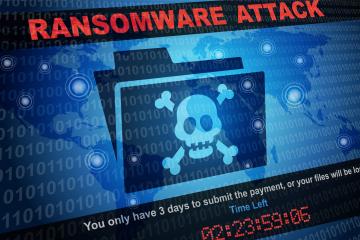
Disaster recovery is an essential element of continuity planning for every business. Disaster recovery involves the set of plans, policies, tools, and processes that must be followed in the event of a massive disaster (natural disaster, human error, IT breach, etc.) to ensure all IT systems can be put back online, and that essential business data can be accessed to ensure operations can continue.
Though it may be worrying to think about, disaster planning is something every business must consider. Planning for the worst means you are prepared to bounce back, no matter what type of IT, human, or natural disaster you might face.
What is DRaaS?
Many businesses, large or small, are simply not equipped to adequately prepare for every element of disaster recovery. Managing disaster recovery completely can be an expensive and overwhelming endeavor, and some growth comes so quickly that you may have a lot of catching up to do.
Luckily, there are a number of professionals offering disaster recovery as a service. These professionals can backup all of your essential business functions remotely, manage their security, and have them fully accessible in the event of any disaster. You’ll have all of the insight, technologies, protections, and planning that a professional business can offer, without worrying about having to take care of it all yourself.
Will DRaaS replace my business continuity planning?
Disaster recovery preparedness is arguably the most important feature of business continuity planning. As more and more business is conducted online, it is clear that having our essential data up, accessible, and safe from breaches or loss is step one to ensuring you can bounce back from a disaster.
That said, DRaaS professionals cannot be solely responsible for planning for every element of your business continuity plan. Disaster recovery services can help make sure your systems come online after any form of disaster. With that peace of mind in place, you’ll be free to focus on your succession planning, financial planning, insurance, and growth in the future, knowing your systems and data are safe and secure.
What does DRaaS cover?
DRaaS covers your online services, website, internal systems, customer information, intellectual property, ensuring they can all be put online completely and quickly in the event of any disaster. This means that no matter what you face – a fire, a flood, a breach, or an attempt at hacking, you can rest assured that you’ll be back online as soon as possible. While you deal with the fallout of your business interruption, your IT systems come online quickly, seamlessly, and securely.
Does my business need DRaaS protection?
For large corporations with many employees, branches, and innumerable devices accessing their data, DRaaS is absolutely essential. These large companies have complex networks, many staff, innumerable devices, and a number of technologies that interact to provide service.
While these large operations will often have IT specialists on-staff, disaster recovery services are often also necessary. DRaaS allows IT professionals to rest assured that everything they need is safe, backed up, and easily accessed, they are able to focus on growth, and focus on assisting internal staff, and preparing for the future. By making use of disaster recovery as a service solutions, you gain access to industry-standard security and technology, and don’t have to worry about managing the backup yourself.
How do I know if DRaaS is something I need for my small business?
There are many small, online businesses that can easily plan for their own disaster recovery testing. This includes small freelancing business, for example, or dropship companies that are operated online. If your business is quite small and online-only, you can very easily prepare yourself for disaster by creating backups, and having staff aware of a general plan to follow in case of a disaster or system outage.
If you are operating a small business, you are often relying on third-party technologies to have their own DRaaS planned accordingly. When choosing vendors, partners, and software to work with, do your homework. Large and trusted companies will have their own DRaaS systems in place, meaning any work you store remotely will stay safe, even if there is a business disruption for one of your vendors.
Is DRaaS affordable?
The cost of the disaster recovery services you require will depend on the amount of information you have, how complex your systems are, and just how much is required on a daily or monthly basis to keep your business safe from disaster. You will likely need to get a consultation with a DRaaS provider to find out exactly what your services will cost.
For businesses that have less complex needs, there are many simplified systems offering straightforward backup, that will simply charge for the amount of storage you require.
You may be hesitant to take on the expense of DRaaS, but the real question you need to ask is whether your business can afford to go without disaster recovery services. Depending on how complex your systems and information, DRaaS may require a significant expenditure, but you will always have to weigh this cost against the potential cost of losing time, sensitive data, and key business systems in the event of a disaster.



